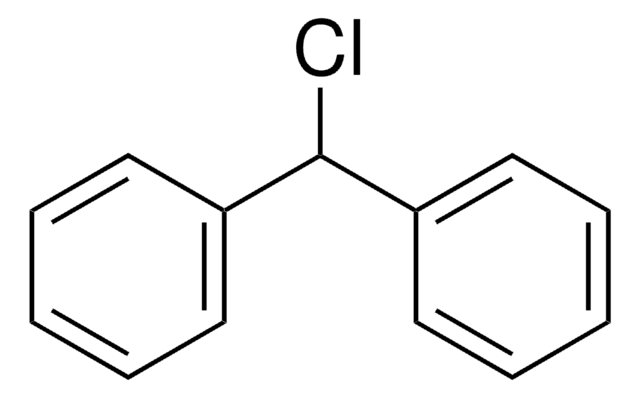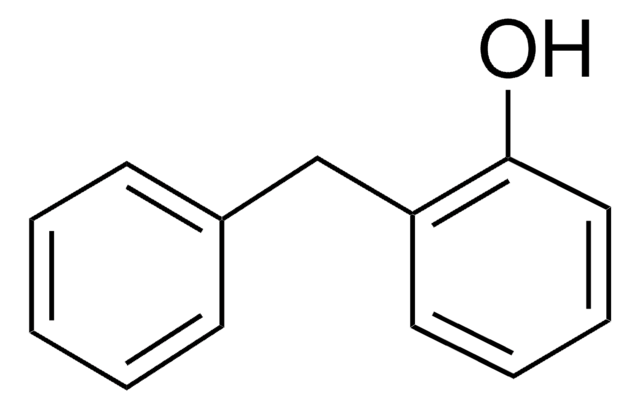D209317
Diphenylmethane
99%
Synonim(y):
Benzylbenzene, Methylenedibenzene
About This Item
Polecane produkty
gęstość pary
5.79 (vs air)
ciśnienie pary
<1 mmHg ( 77 °C)
Próba
99%
Postać
liquid
temp. samozapłonu
905 °F
współczynnik refrakcji
n20/D 1.577 (lit.)
tw
264 °C (lit.)
mp
22-24 °C (lit.)
gęstość
1.006 g/mL at 25 °C (lit.)
ciąg SMILES
C(c1ccccc1)c2ccccc2
InChI
1S/C13H12/c1-3-7-12(8-4-1)11-13-9-5-2-6-10-13/h1-10H,11H2
Klucz InChI
CZZYITDELCSZES-UHFFFAOYSA-N
Szukasz podobnych produktów? Odwiedź Przewodnik dotyczący porównywania produktów
Powiązane kategorie
Opis ogólny
Zastosowanie
- Diphenylmethane is widely used in the synthesis of luminogens for aggregation-induced emission (AIE).
- It is used in the preparation of a polymerization initiator, diphenylmethyl potassium (DPMK).
- It is one of the precursors in the synthesis of a dendrimeric polycyclic aromatic hydrocarbon (PAH), hexakis[4-(1,1,2-triphenyl-ethenyl)phenyl]benzene.
Hasło ostrzegawcze
Warning
Zwroty wskazujące rodzaj zagrożenia
Zwroty wskazujące środki ostrożności
Klasyfikacja zagrożeń
Aquatic Acute 1 - Aquatic Chronic 1
Kod klasy składowania
10 - Combustible liquids
Klasa zagrożenia wodnego (WGK)
WGK 2
Temperatura zapłonu (°F)
266.0 °F
Temperatura zapłonu (°C)
130 °C
Środki ochrony indywidualnej
dust mask type N95 (US), Eyeshields, Gloves
Certyfikaty analizy (CoA)
Poszukaj Certyfikaty analizy (CoA), wpisując numer partii/serii produktów. Numery serii i partii można znaleźć na etykiecie produktu po słowach „seria” lub „partia”.
Masz już ten produkt?
Dokumenty związane z niedawno zakupionymi produktami zostały zamieszczone w Bibliotece dokumentów.
Klienci oglądali również te produkty
Nasz zespół naukowców ma doświadczenie we wszystkich obszarach badań, w tym w naukach przyrodniczych, materiałoznawstwie, syntezie chemicznej, chromatografii, analityce i wielu innych dziedzinach.
Skontaktuj się z zespołem ds. pomocy technicznej











